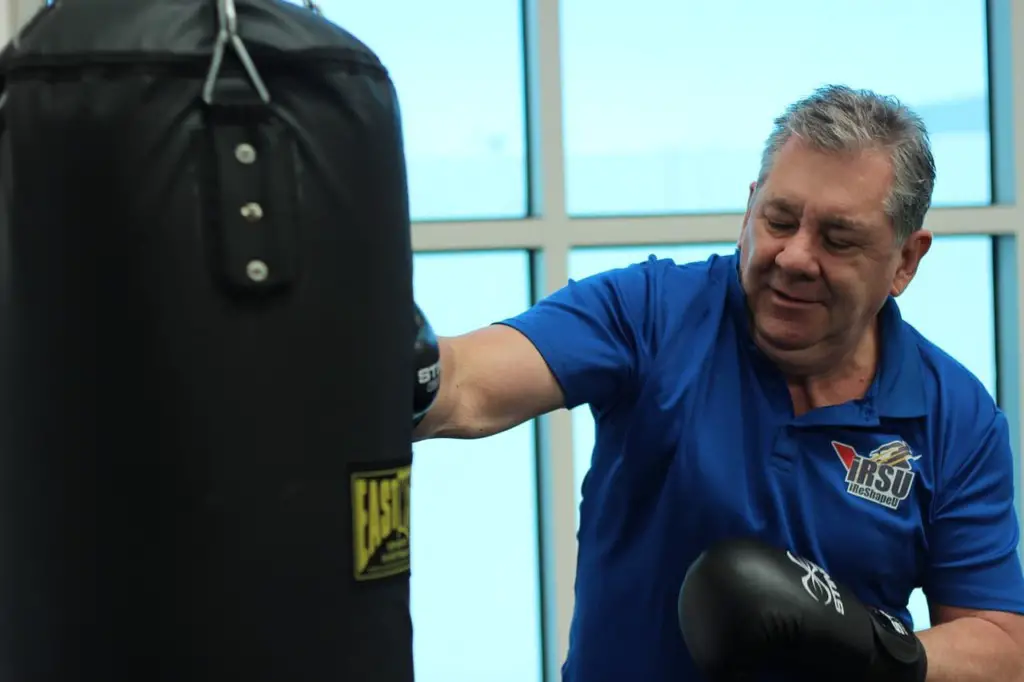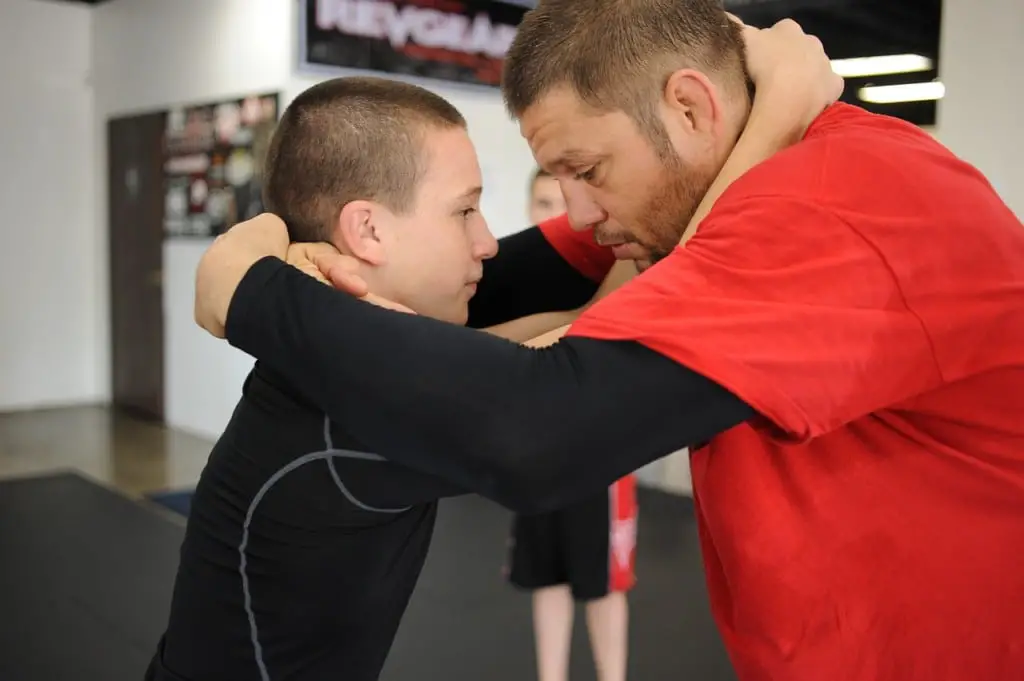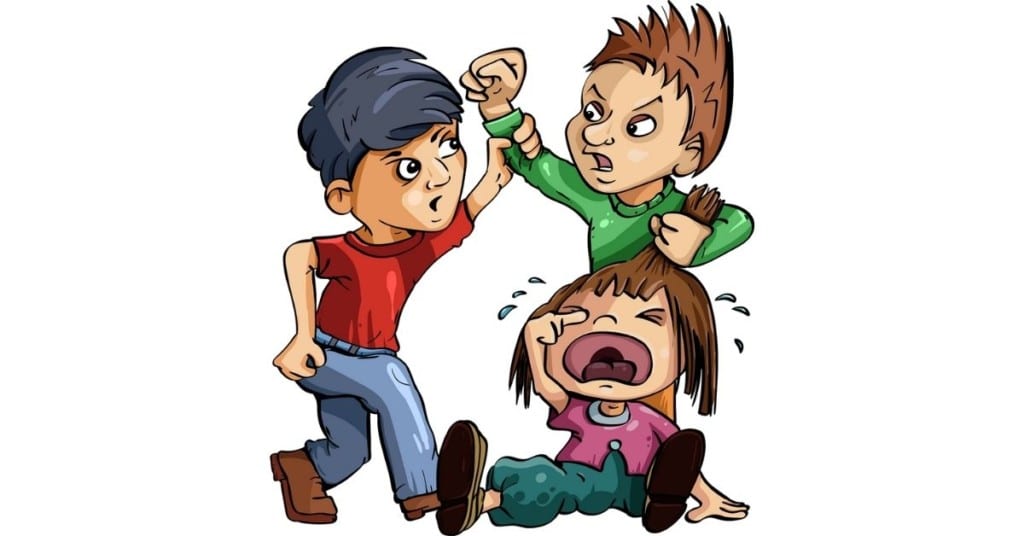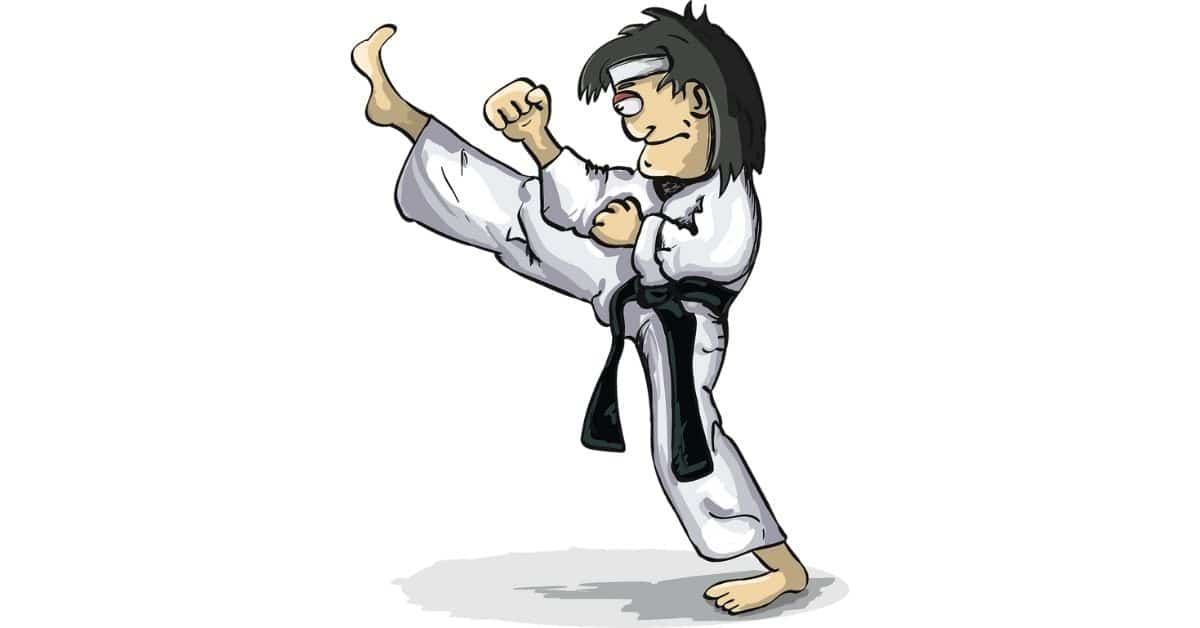Learning martial arts is a fantastic choice. It grants the trainee many benefits, such as confidence and calmness. To maximize these results, training at the right age is beneficial. So, what’s the best age to begin our training?
As a whole, the best age to start learning martial arts is between 6-10 because many studies showed martial arts had positive effects on children in this range of ages. As a result, kids between the ages of 6-10 can enjoy martial arts, experience many positive outcomes, and learn to fight.
In this article, we’ll dive into details regarding this issue. Signing your child to a martial arts school can be intimidating. However, studies correlated martial arts with improved physical and mental health in children. Consequently, be glad you’re bettering your kids’ health.
At what age should you begin training in martial arts?
“In general, findings seem to support the relationship between martial arts practice and positive socio-psychological responses for children.”
(Source)
Many studies showed there’s a correlation between training in martial arts and positive psychological benefits. As such, training in them at a young age is wise.
You should begin training in martial arts today. Whether you’re 10 or 70 years old, training in it can highly benefit both your physical and spiritual life. The benefits you’ll experience may vary from increased confidence and better self-esteem to knowing self-defense.
Although it’s a cliche, martial arts have no age restriction. Consequently, you can train in them as long as you’re walking on Earth. All the benefits you can experience are applicable whether you’re 6 or 70 years old. If you’re interested in knowing the benefits of martial arts, follow the link to an article of mine.
Today, there are many fighting styles one can train. For instance, there’s Karate, Jiu-Jitsu, Boxing, and Judo. As a result, one can highly benefit from doing all of them.
Yet, their styles are somewhat different. Because of that, I wanted to know whether a correlation exists between your age and the martial art you should practice. Surprisingly enough, there is.
Overall, you can train in whichever one you desire. If you want to learn to Box, you can whether you’re fit for it. However, you may find more benefits in a distinct fighting style.
For example, training in a more spiritual martial art may be more practical for the elderly. Yet, Boxing and Kickboxing are suitable for younger aged people. Again, you can train in whichever martial art you desire. That’s the beauty in it. If you want to become a solid fighter, you can learn MMA or Boxing.
| Suitable for younger people | Suitable for the elderly |
|---|---|
| Kickboxing | Qigong |
| Boxing | Tai chi |
| Jiu-Jitsu | Boxing |
| Judo | Karate |
| MMA | Kung fu |
| Krav Maga | Aikido |
| Karate | Wing Chun |
| Kung fu |
Eventually, there are more martial arts I haven’t mentioned compatible with both age groups. Furthermore, the table isn’t as accurate as I present it because you can learn any martial art at any age. As a result, even if you’re a senior, you can learn MMA or Jiu-Jitsu. Likewise, if you’re young, you can enjoy and benefit plenty from Wing Chun.
When is it too late to practice martial arts?
You can practice martial arts from any age. Additionally, there’s no limit. Consequently, you can enjoy the benefits of it as long as you’re capable of thinking. Martial arts have numerous aspects, and therefore you can train at least one constantly.
It’s never too late to practice martial arts because various arts aren’t as focused physically. Instead, their priority is the spiritual realm. As a result, you don’t have to be physically fit to train in martial arts. For instance, Tai chi incorporates meditation and other non-physical techniques.

Yet, some people believe martial arts training is learning to fight, which is not entirely wrong. However, it’s not correct in many cases. For instance, you can practice Qigong without standing up. As a result, it fits perfectly for the elderly and other enthusiastic practitioners.
Additionally, you can combine these spiritual fighting styles to create a complete fighting style. For example, when I practiced Krav Maga, I also did Qigong. Thus I enjoyed both realms; the physical and the spiritual.
“…the overall dropout rate was extremely low suggesting both that the elderly are capable of participating in a hard martial art and that they have an interest in it as a viable alternative to other forms of exercise.“
(Source)
This study examined the relationship between Taekwondo and the elderly. The results were surprising. Even in an older age group, they performed and progressed in a challenging fighting style.
Training included many demanding techniques and movements that required them to practice. Yet, the results found that the relationship was incredibly positive.
Eventually, there’s no age restriction for both children and adults. As a result, you can learn a fighting style whenever you desire. Yet, starting from an earlier age correlates with many mental health and physical benefits. Thus starting as early as possible is wise.
Risks of training martial arts at a young age
Injuries
As much as I appreciate fighting styles and training in them, we can’t ignore the potential for injuries. Because of that, qualified schools will take many cautious actions. For instance, in every class, everyone has to wear boxing gloves. If you’re interested in buying boxing gloves—I own this pair.
Martial arts classes have a risk of injuries because many techniques and drills involve using physical force. As a result, we must avoid these injuries by using protective gear. For instance, a punching bag drill incorporates striking or kicking it to practice learned techniques. Thus you’ll be exposed to hand injuries.
To avoid permanent damage, the primary caution step we must take is to wear protective gear. I see many people hitting a punching bag without any hand protection. Although it’s not mandatory, 17% of Boxing injuries involve the wrists or the hands. (Source)
For that reason, you must ensure you’re wearing protective gear at all times. In addition, hitting your training partners in forbidden places is not ethical. As a result, you shouldn’t do it.
Bad school
Today, learning to fight in a school can be somewhat intimidating. If you’re sending your children to an unfamiliar school, you should be confident that it’s a qualified one.
Martial arts schools have a significant influence on young children. As a result, if you’re sending your friends or family to train in one, you should ensure that it’s a qualified one. Today, many schools aren’t of high quality, and therefore you shouldn’t train there.
It’s not that challenging to find a solid place that teaches martial arts. All you need to do is check the reviews on Google, call the location, and drive there. Consequently, you’ll know that it’s indeed a solid location.
Additionally, the two points correlate. Unqualified schools will have a higher chance of injuring you. As a result, training in one may lead to permanent damage both physically and mentally.
Benefits of training martial arts at a young age
“…a significant improvement was observed following the 6-month martial arts intervention on several measures of executive functions, including inhibition and shifting rate and speed of cognitive processing.” (Source)

Training in martial arts provides plenty of benefits to the trainee. As such, learning one—is valuable and practical. Throughout my life, I’ve experienced all of the advantages I mentioned. In addition, I’ll provide as many cite from pieces of research, so you can be confident that it’s genuine.
Increased self-confidence and self-esteem
Training in martial arts has altered experiences of control and vulnerability, self-esteem, self-concept, fitness, confidence, and relaxation. As a result, some researchers characterize martial arts practice as a form of self-help.
(Columbus & Rice, 1998).
Because many studies found that martial arts are a form of self-help, we understand that training in it will benefit one’s mental health. Today, many people experience various mental health issues. What if I told you you could better your mental health and learn to fight at the same time?
One of the more known benefits of training in fighting styles is better confidence and self-esteem. In training, you’ll overcome many obstacles and constantly push yourself to your limits. As a result, you’ll experience an accomplishment feeling often, and therefore you’ll be confident.
If you’re experiencing the symptoms of today’s society, such as low self-esteem or self-trust, martial arts can do wonders for you. That said, you won’t notice it in the beginning. However, with consistency, your confidence will increase tremendously.
“This outcome is in agreement with previous findings that martial arts practice improves exercise self-efficacy (Caldwel et al., 2009). They found that a 15-week tai chi program had a significant effect on exercise self-efficacy among college students.”
Source
All of the studies I’m citing are well-known pieces of research. As a result, trusting them is effortless. From personal experience, that’s the most prominent benefit you’ll notice as you become decent in martial art. When I finished my Krav Maga training, my confidence and self-esteem were up there since I’d overcome many obstacles.
Higher pain tolerance
Knowing how to get punched is crucial. I know it sounds silly, but hear me out. Picture yourself in a street fight with a drunk person. Well, you know he can’t function since he’s drunk. As a result, you’ll want to take him down as soon as possible.
Well, you’ll have to close the distance, which is scary. If one is afraid of getting punched, one won’t beat the attacker.
Martial arts increase pain tolerance because, in training, you’ll get hit plenty of times. As a result, you won’t be afraid of getting punched. In a dangerous situation, you must close the distance with the opponent. Thus you’ll put yourself at significant risk of getting hit.
Most people, when they get a punch towards them, will crumble. Such an action is a primary sign they’re scared of getting hit. From personal experience, when I began my training I crumbled all the time. However, as I became more advanced, I wasn’t afraid anymore. Thus I won’t be scared in a street fight.
Calmness and being less hostile
“Martial arts apprentices turned out to present a statistically significantly lower level of hostility and of the general aggression index than combat sports athletes.
(Source)
Studies showed that martial arts trainees have lower hostility and overall aggression levels. Because the training provides an outlet for the trainees, they’ll release built tension and stress while they’re training. As a result, they’ll be calmer and less stressed.

From the study, we understand that martial arts help manage anger. I wrote an entire article precisely on that issue, and I highly encourage you to check it out.
Yet, isn’t being less aggressive not suitable for self-defense? Well, the answer is somewhat simple.
Although you’ll be calmer and less stressed, once you need to use physical force, you’ll have plenty to release. Training a fighting style will make you a better fighter, and therefore the two statements aren’t contradictory.
In fact, they feed each other. Not only will you be more aggressive and capable of using physical force, but you’ll also be less violent. As a result, you’ll become a capable human being.
Better physical shape
Bettering your physical condition is a highly desirable trait in today’s world. Many would do anything to stay in shape for the rest of one’s life. What if I were to tell you that you can learn to fight and manage your body weight simultaneously? Well, you can.
Training in martial arts will better your physical shape post your first training because it incorporates many muscle groups, and therefore you’ll burn more calories than the average activity. For instance, an hour-long session of Kickboxing will burn up to 900 calories.
I’ve seen my physical shape bettering in correlation with the amount of effort I was investing in training. As a result, with hard work and staying consistent, you’ll manage your body weight effortlessly.
Read more about whether martial arts get you in shape and does Krav Maga builds muscle. I highly encourage you to visit these articles if you’re interested in the fitness side of martial arts.
According to a study, Krav Maga is a remarkably intense workout. It meets the ACSM guidelines for an activity that manages body weight. (ACE) Generally, most martial arts will assist you in getting in shape, losing body fat, and gaining muscle. Follow the links to read articles of mine on such topics.
Conclusion
There’s no age restriction for training in martial arts. Because of that, whether you’re 6 or 82 years old, you can begin training. Additionally, I highly encourage you to start as soon as possible. That way, you’ll notice many benefits naturally flowing your way.
Training in martial arts is a form of self-development. Consequently, you’ll become more confident, calm, less stressed, and in better physical condition. Now you can see that learning a fighting style isn’t as intimidating as you thought. There are so many beneficial sides to it.
However, training may get expensive. As a result, I encourage you to train at home if you’re unwilling to invest money into training. I wrote a complete guide on practicing martial arts at home. I highly encourage you to read it, as I’ve spent many hours creating it.
Here are other articles you’d enjoy reading:
Why Martial Arts Don’t Make You Violent | Breaking Myths
Is Martial Arts and Fighting the Same? | A Helpful Guide
7 Best Martial Arts for Street Fights | Full Breakdown
How Often Should You Practice Martial Arts | Complete Guide
7 Safest Martial Arts that Are Still Effective | Full Guide

